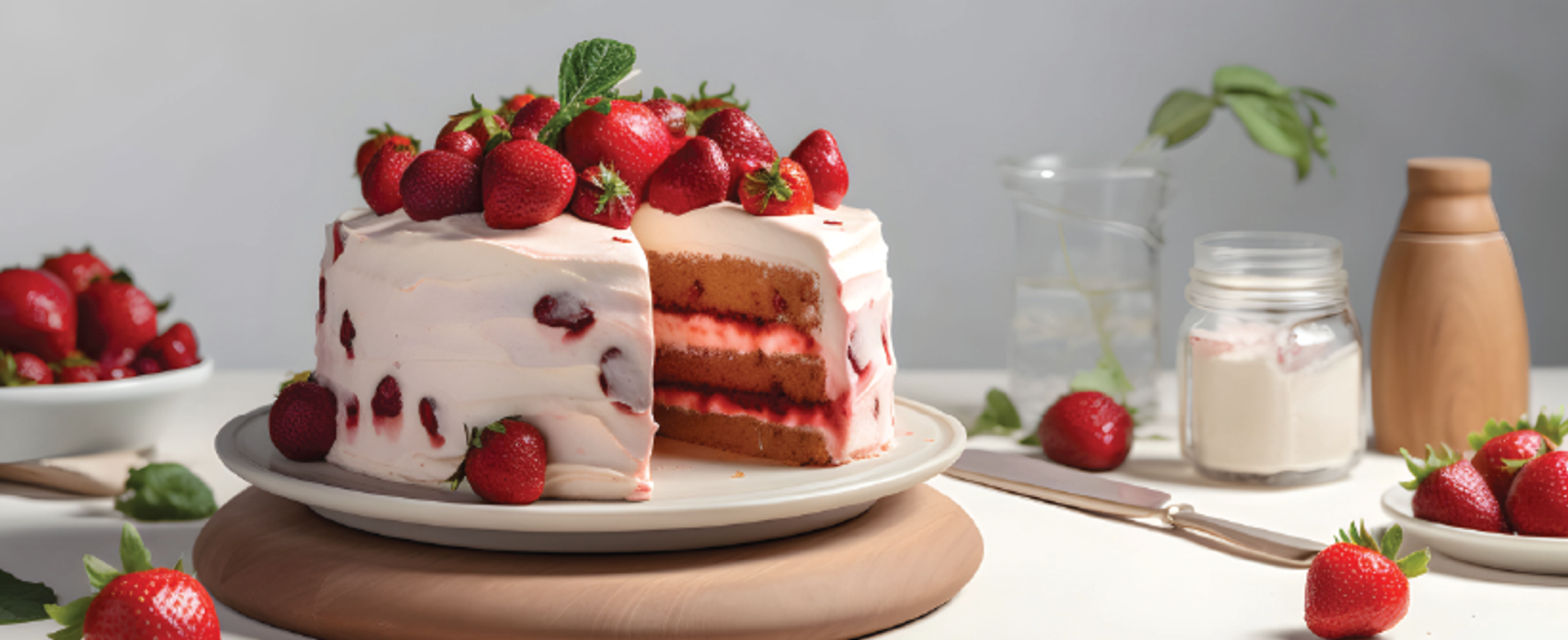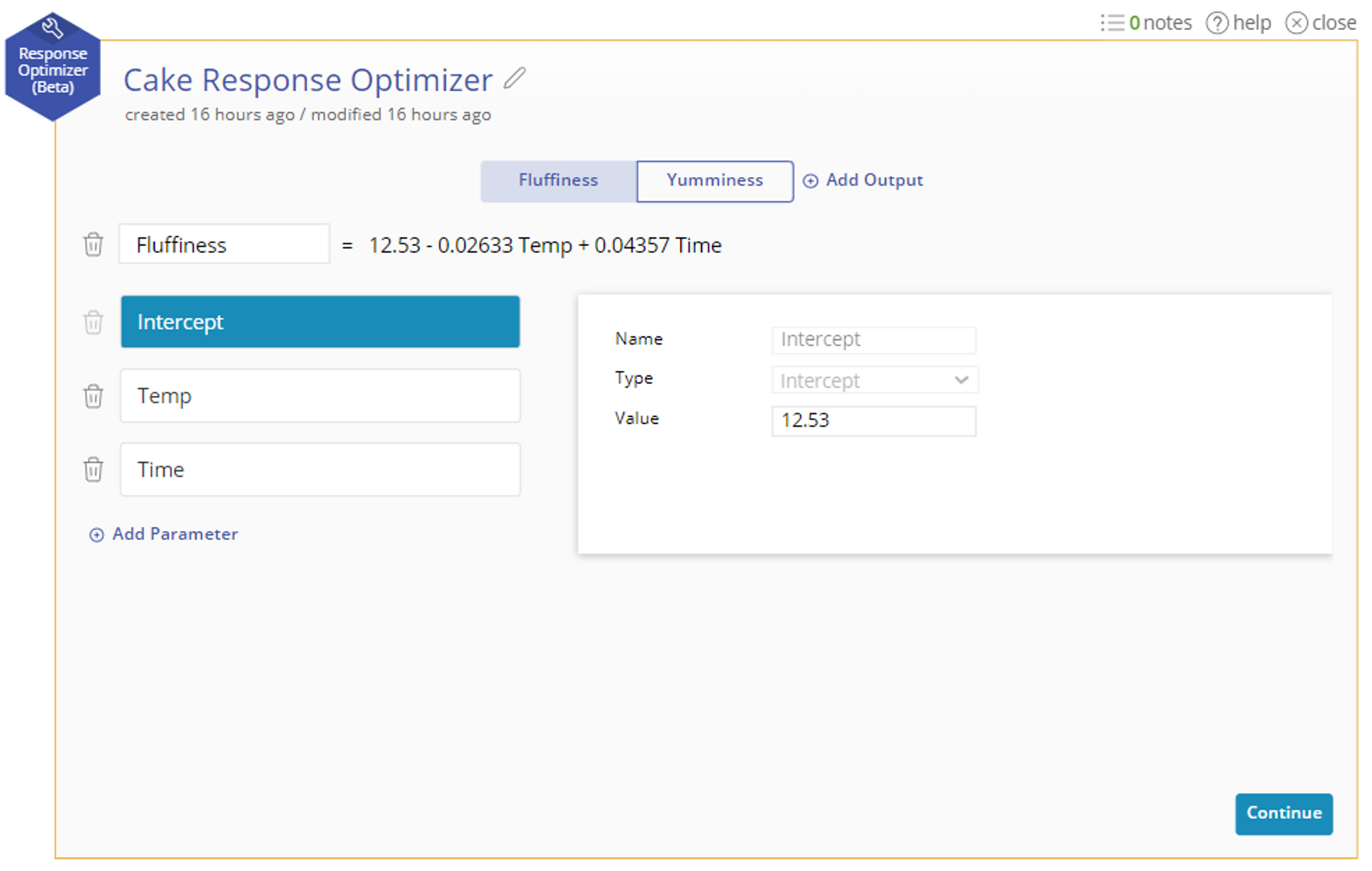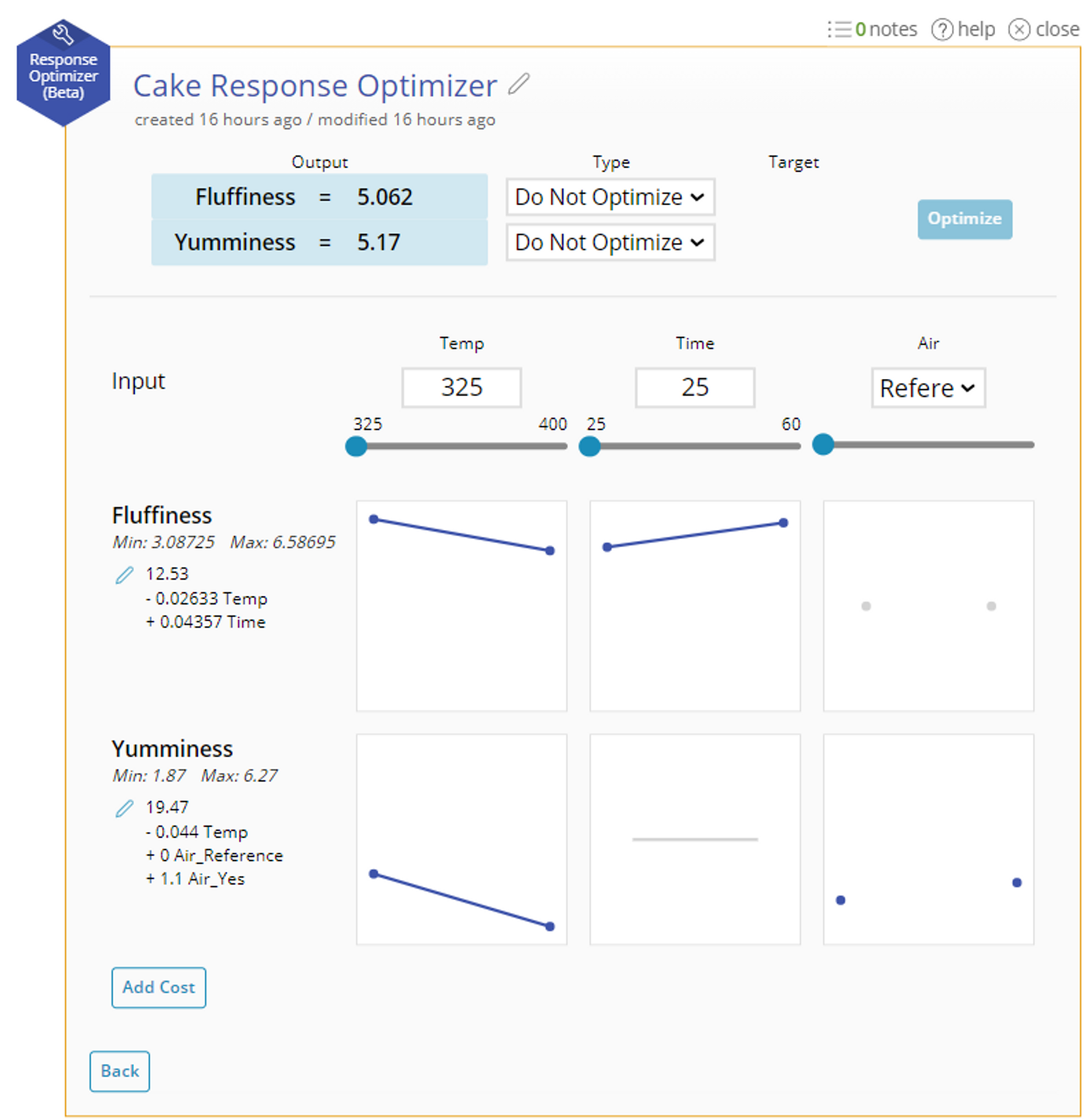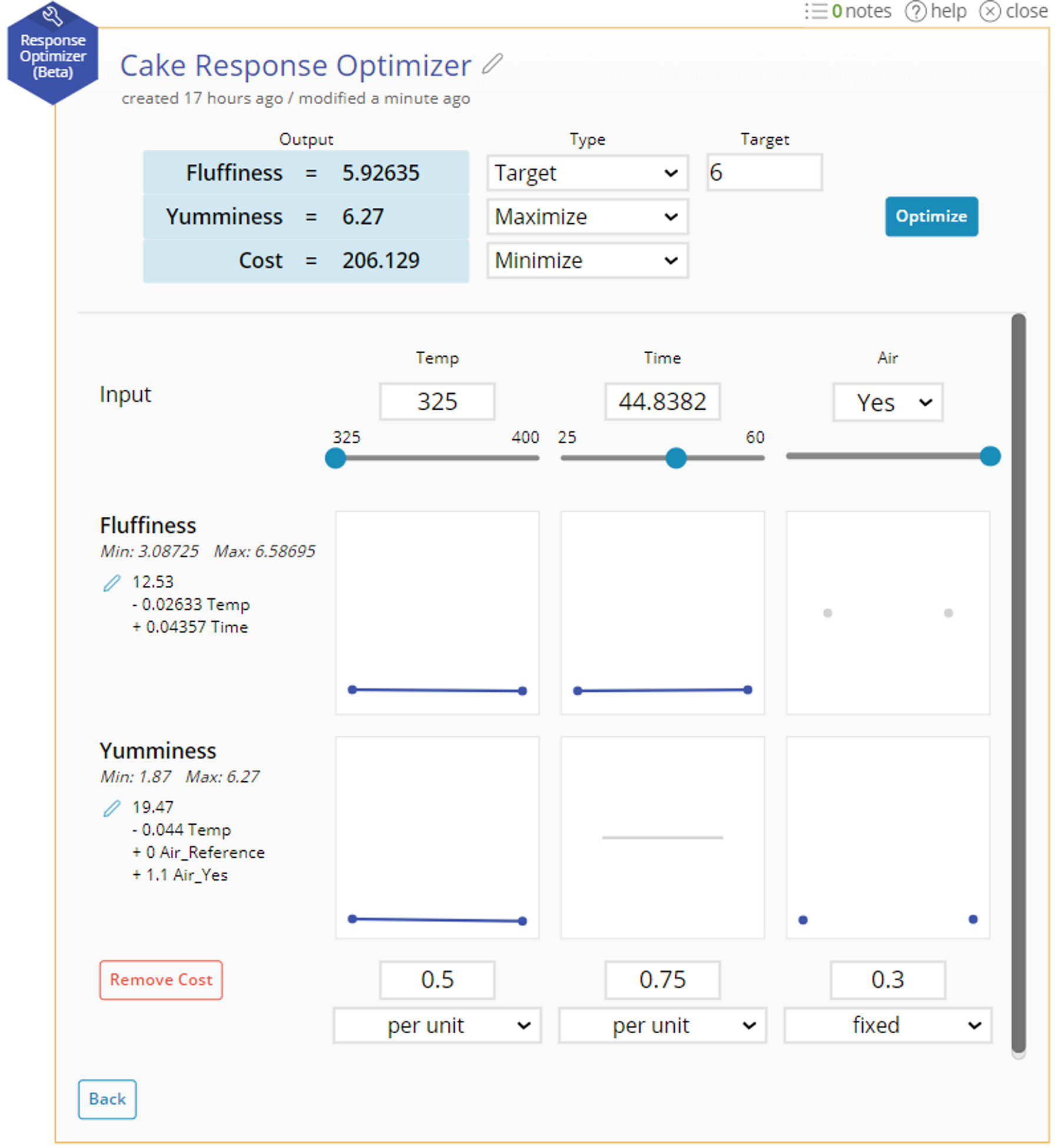
How to Have Your Cake (and Eat it Too)
June 27, 2023Achieve two (or more) goals simultaneously? - some say it can’t be done – “you can’t have your cake… “ you know.
But we face situations all the time where we have an imperative to achieve two or more (often contradictory) targets at the same time - say, to eat what you want while losing weight, graduate college while having fun, or cutting your costs without losing customers. While we’re not suggesting all of these are possible (or desirable), now that EngineRoom has a brand-new tool aptly named Response Optimizer (unofficial nickname: Maximal Optimus), we decided to put the “can’t do two things at once” hypothesis to the test.
The only way to get the team to cooperate outside work hours was with the universal hook – food. So we ran a cake experiment. The goal: have the perfect texture (‘Fluffiness,’ a combination response encompassing various characteristics such as lightness, structure, and consistency) with maximum tastiness (measured by a ‘Yumminess’ score).
To keep things simple, we varied three factors (independent or input variables) over two levels each: bake time (25 vs. 60 minutes), bake temperature (325F vs. 400F), and airflow (without vs. with), with all else held constant, i.e., using the same pound cake recipe. A panel of self-described ‘cake connoisseurs’ scored the cakes’ taste on a 7-point Hedonic scale (1=Yuck, 4=Meh, 7=More!) and texture on a similar 7-point scale (1=Too dense, 5-6=Just right!, 7=Too light), resulting in average yumminess and fluffiness scores for each cake.
Many cakes later, and with our scientific survey panel about to reach sugar-induced torpor, the scores were analyzed, and results noted:
Now all that remained was to enter these results in the tool and let our trusty Optimizer do its thing.
Optimizer import results from a regression analysis, so we ran the study as a regression and pushed the results to the tool. Alternatively, you can manually enter the results into the tool – but that's not as fun.
You could add one more response equation and optimize all three responses together.
With the requisite information - response equations, minimum and maximum for each input factor – captured, we're ready for the optimization. Clicking on the Continue button takes us to the optimizer settings screen:
We set a fluffiness target of 6 (you want it fluffy, but not too fluffy) and a maximum goal for yumminess. Enter these goals and hit Optimize to get the optimal solution:
Temp = 325, Time = 46.5, and Air = Yes gives us a fluffiness of 6 and yumminess of 6.3.
Baking our cake at the lower temperature for longer (about 47 minutes) and turning on the airflow (convection) setting gets us a Goldilocks cake with just the right level of fluffiness and yumminess.
Notice that ‘Add Cost’ button in the bottom left? You can assign cost to the inputs (per unit or fixed) and optimize the responses taking cost into consideration, meaning optimize all responses while minimizing the overall cost. Here’s what it looks like with some entries: $0.05 per degree of Temp, $0.075 per minute of Time, and $0.3 fixed cost for turning on Airflow. The optimal solution now is:
The best solution: setting the temperature at 325F for 45 minutes (shaving a couple of minutes off the last solution) and keeping airflow on. If you do this at home, make a handful of cakes at these settings to verify you’ve hit the sweet spot and get big thumbs up all around.
You can see how this humble effort can lead to bigger things. Next, you’ll be minimizing patient length of stay while maximizing staff/exam room utilization or minimizing call length while maintaining accuracy and maximizing customer satisfaction - you’ll be unstoppable.
Go on, have your cake - and eat it too!

Principal Statistician • MoreSteam
Smita Skrivanek was MoreSteam's first full-time employee on the payroll. Currently, she leads research and development for EngineRoom, including its patented hypothesis testing and DOE wizard elements. Throughout her tenure, she has been responsible for building curriculum, coaching, reviewing projects, and assisting students with their advanced statistical questions. Smita previously taught college-level Statistics courses.
Smita has a Masters in Statistics from The Ohio State University and an MBA from Indiana University Kelley School of Business.







